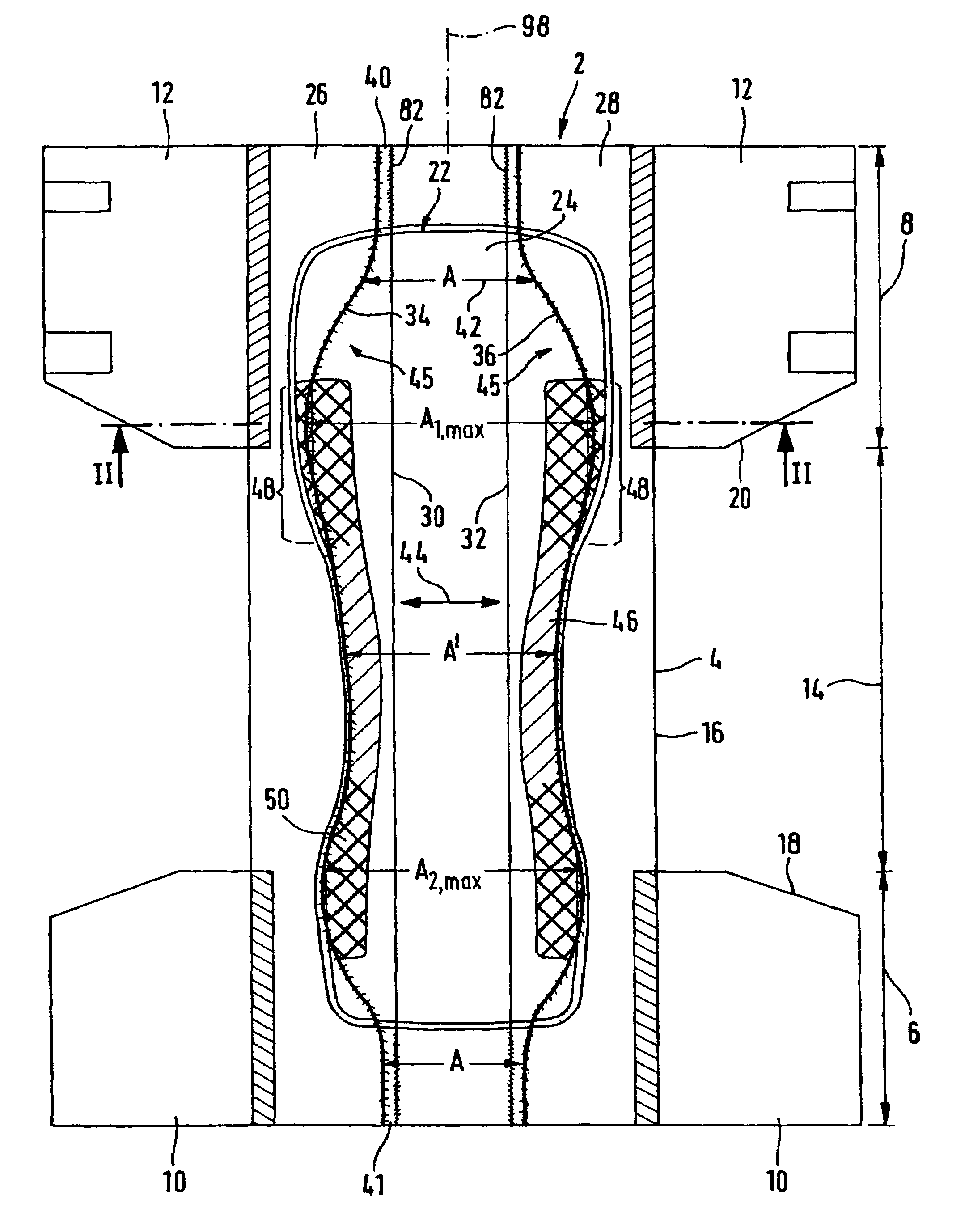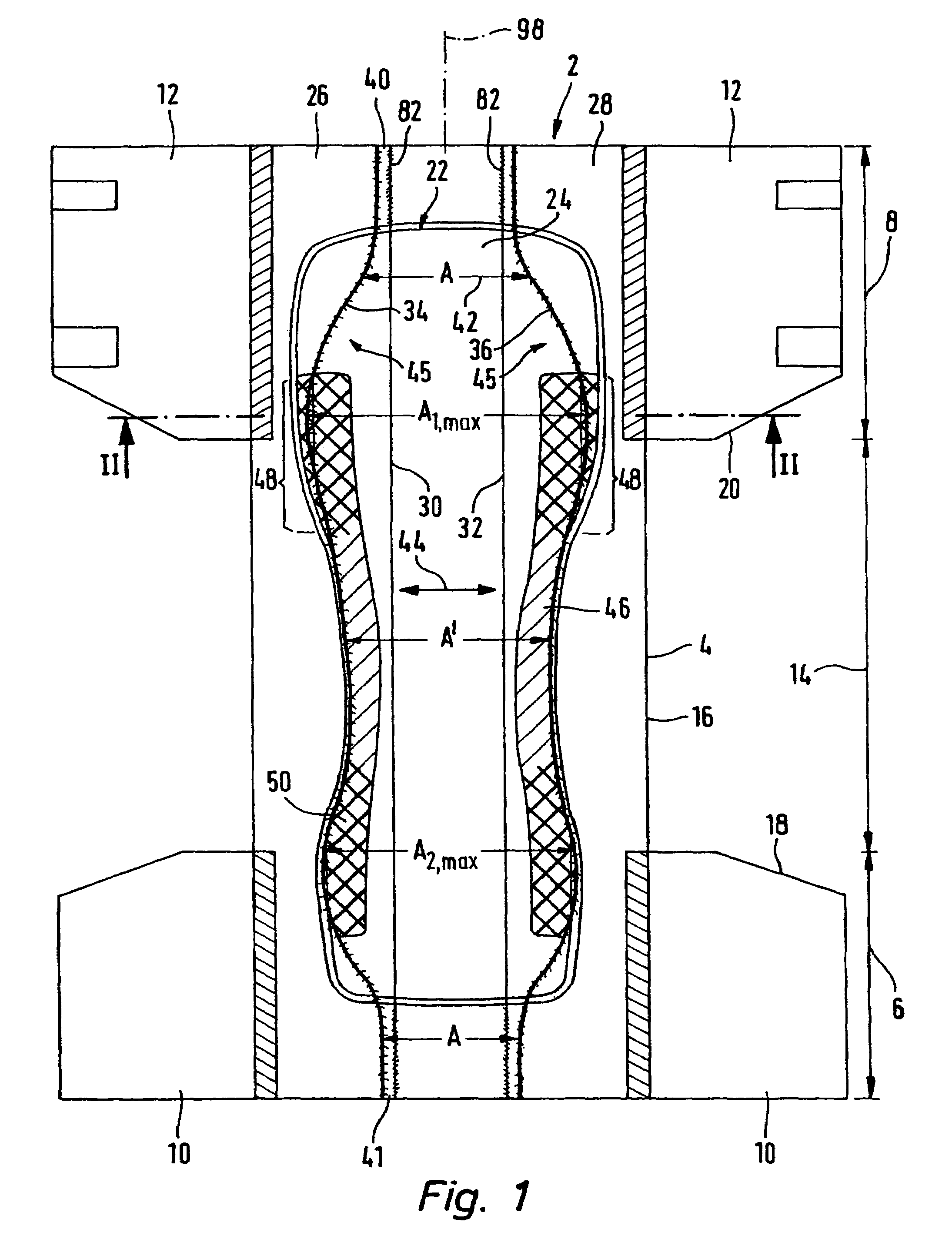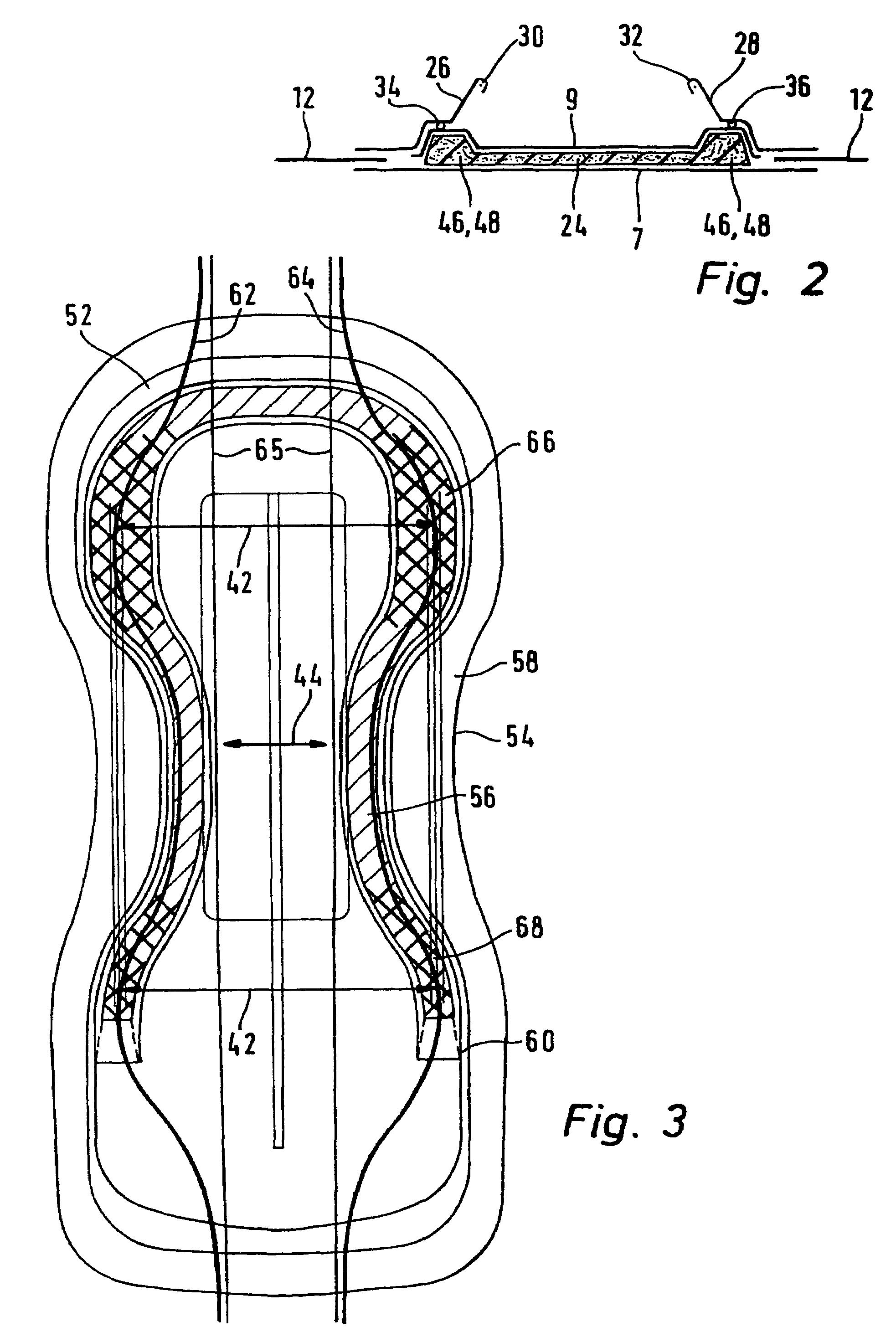Single-use hygiene article
a single-use, hygiene technology, applied in the field of single-use hygiene articles, can solve the problems of undesired fluid transport through capillaries, insufficient sealing or retention capacity, etc., and achieve the effects of increasing surface density, increasing effective height, and increasing separation of cuff base lines
- Summary
- Abstract
- Description
- Claims
- Application Information
AI Technical Summary
Benefits of technology
Problems solved by technology
Method used
Image
Examples
Embodiment Construction
[0026]FIG. 1 shows a plan view of the side of a hygiene article facing the body of the user and indicated in its totality with reference symbol 2 in the form of an incontinence diaper in the flat state. FIG. 2 shows a corresponding section in the section plane along line II-II of FIG. 1. The hygiene article 2 includes a diaper chassis having side flaps 10 or 12 directly or indirectly introduced on both sides of a forward region 6 and a rear region 8. The region between the front region 6 and the rear region 8 is designated as a crotch region 14. A sideward edge 16 of the diaper body 4 in the crotch region together with the immediately adjacent side edges 18, 20 of the side flaps 10 and 12 define the leg openings of the user in the state of use of the hygiene article.
[0027]The chassis has a liquid impermeable layer 7 on its side facing away from the body of the user, whereas the side flaps 10, 11 are made from an actively breathing material, preferably an air permeable fleece materia...
PUM
 Login to View More
Login to View More Abstract
Description
Claims
Application Information
 Login to View More
Login to View More - R&D
- Intellectual Property
- Life Sciences
- Materials
- Tech Scout
- Unparalleled Data Quality
- Higher Quality Content
- 60% Fewer Hallucinations
Browse by: Latest US Patents, China's latest patents, Technical Efficacy Thesaurus, Application Domain, Technology Topic, Popular Technical Reports.
© 2025 PatSnap. All rights reserved.Legal|Privacy policy|Modern Slavery Act Transparency Statement|Sitemap|About US| Contact US: help@patsnap.com



